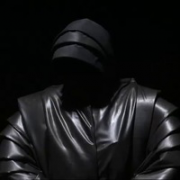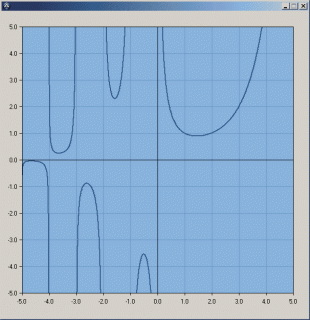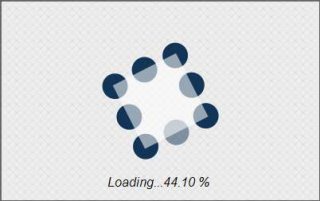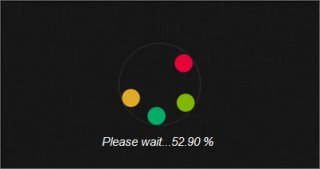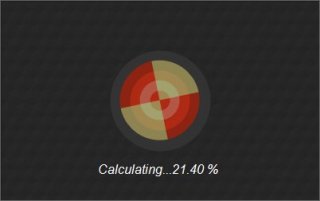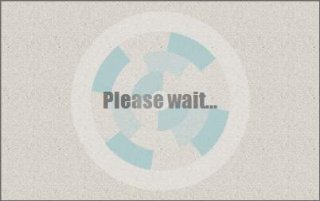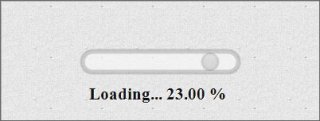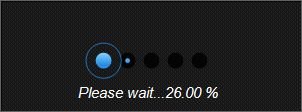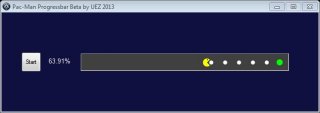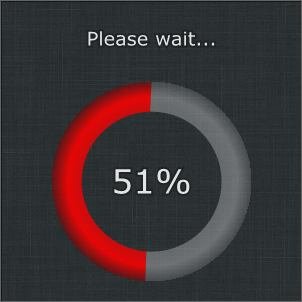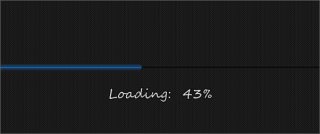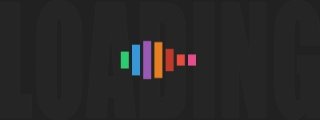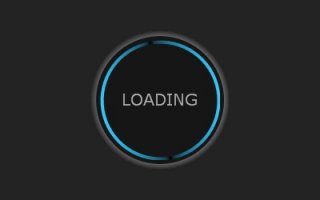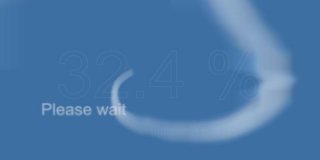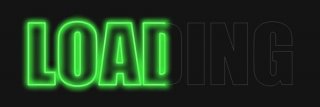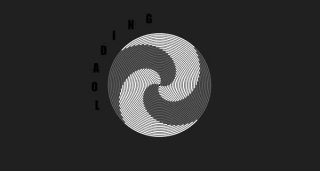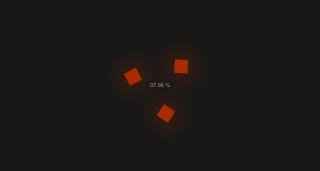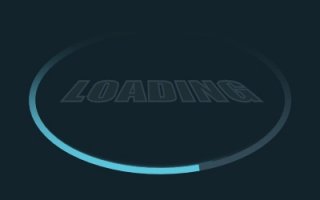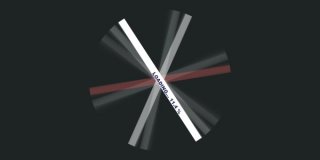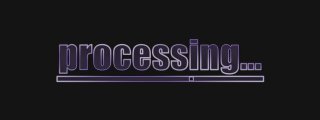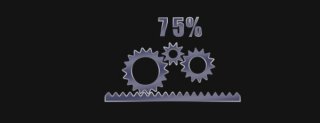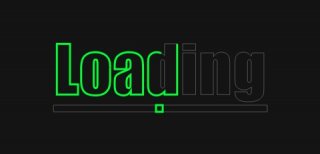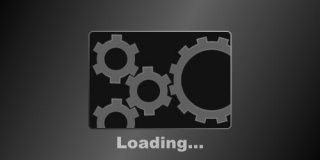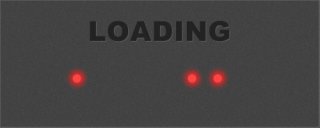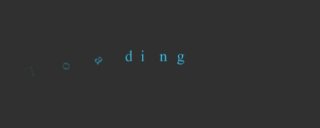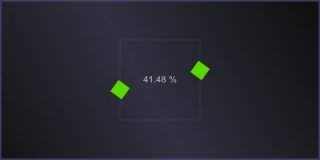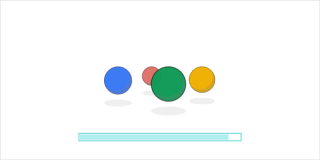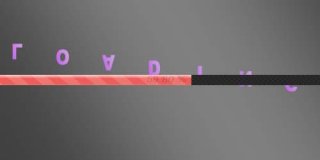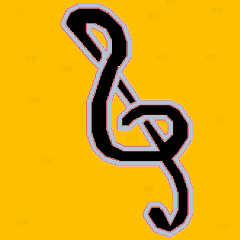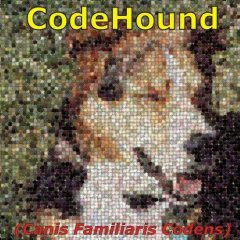Leaderboard
Popular Content
Showing content with the highest reputation on 03/31/2018 in all areas
-
Features: Create modern looking borderless and resizable GUIs with control buttons (Close,Maximize/Restore,Minimize, Fullscreen, Menu) True borderless, resizeable GUI with full support for aerosnap etc. Many color schemes/themes included. See MetroThemes.au3 for more details. 3 type of Windows 8/10 style buttons. Modern checkboxes, radios, toggles and progressbar. All buttons, checkboxes etc. have hover effects! Windows 10 style modern MsgBox. Windows 10/Android style menu that slides in from left. Windows 10 style right click menu Credits: @UEZ, for the function to create buttons with text using GDIPlus. @binhnx for his SSCtrlHover UDF Changelog: Download UDF with example:1 point
-
LAST VERSION - 1.1 18-May-12 Control Viewer (CV) is a replacement of AutoIt Window Info with a number of advantages. I tried to stick to the interface of the last, so you almost do not have to be retrained. During testing, I never managed to find any controls that could not be identified by CV (on the contrary, shows a lot of hidden controls, especially for the system windows). The all program settings are stored in the following registry key: HKEY_CURRENT_USERSoftwareY'sControl Viewer The main differences CV from AWI Shows the complete list of all existing controls for the window that are interested (visible, hidden and deleted controls are displayed with different colors that can be changed to any other).Dynamically changing information during search for the windows and their controls.Ability to quickly switch between controls in the list.Ability to show/hide any controls from the list (useful for the overlaping controls).Information for the Style and ExStyle parameters shown in the form of hexadecimal values, and as its flags.Added the PID and Path parameters in the Window tab and ability to quickly open a folder that containing the process file.Added the coordinate system relative to the selected control.Shows a color of the selected pixel in RGB and BGR formats.Shows an example fill of the selected color.Ability to select the text encoding (affects the Text parameter in the Control tab).The complete change the appearance of pop-up frame for the selected controls.Simple and convenient tool to get a screenshot of the part screen of interest for publication on the forum (Capture tab).Create a report in the clipboard or a text file for subsequent publication on the forum.Search all running AutoIt scripts and their windows in the system (AutoIt tab).User-friendly interface. Used shortcuts Ctrl+Alt+T - Enable/Disable "Always On Top" mode (also available from the menu). Ctrl+Alt+H - Enable/Disable highlight selected controls (also available from the menu). Ctrl+A - Select all text (works in any input field). Ctrl - Hold down when moving the mouse to scroll the screenshot (Capture tab). Shift - Hold down when stretching/compression of the contour frame for an equilateral resizing screenshots (Capture tab). DoubleClick (on the screenshot) - Save the image to a file (Capture tab). DoubleClick (on any list item) - Open a folder with the file of the process or AutoIt script (AutoIt tab). Del (on any list item) - Close process (AutoIt tab). F5 - Updating the list (AutoIt tab). If anyone have any questions or comments about CV, please post it in this thread. I will be glad to any feedback and suggestions. Files to download Binary (x86 and x64) Redirection to CV_bin.zip, 1.14 MB CV_bin.html Source Redirection to CV_source.zip, 691 KB CV_source.html1 point
-

.NET Common Language Runtime (CLR) Framework
VenusProject2 reacted to ptrex for a topic
WHAT : is .NET Common Language Runtime (CLR) Framework The Common Language Runtime (CLR) is a an Execution Environment . Common Language Runtime (CLR)'s main tasks are to convert the .NET Managed Code to native code, manage running code like a Virtual Machine, and also controls the interaction with the Operating System. As part of Microsoft's .NET Framework, the Common Language Runtime (CLR) is managing the execution of programs written in any of several supported languages. Allowing them to share common object-oriented classes written in any of the languages. HOW : To access the CLR environment you need to create an Appdomain Object - _CLR_GetDefaultDomain() An AppDomain provides an isolated region in which code runs inside of an existing process. Application domains provide an isolation boundary for security, reliability, and versioning, and for unloading assemblies. Application domains are typically created by runtime hosts, which are responsible for bootstrapping the common language runtime before an application is run. WHEN : Would you use CLR Runtime Hosts 1. To access .NET Class Libraries : System System.Collections System.Data System.Drawing System.IO System.Text System.Threading System.Timers System.Web System.Web.Services System.Windows.Forms System.Xml 2. Accessing custom build .Net Assemblies : Some Examples (but there are a ton out there) AutoItX3 - The .NET Assembly for using AutoItX JSonToXML libr. XMLRPC Libr. .NETPDF libr. .NETOCR Libr WInSCP Libr. ... 3. To Compile .Net Code into an Assembly 4. To Run C# or VB.net Code 5. To Mix AU3 and .Net functionality in your Application WHERE : To find documentation about CLR First of all you can find a lot on MSDN and here : Post 4 & Post 6 EXAMPLES : Multiple examples included in Zip !! Example : “System.Text.UTF8Encoding” Example : “System.IO.FileInfo” Example : “System.Windows.Forms” Example : AutoItX3 Custom .NET Assembly AutoItX Example : Compile Code C# and Code VB Example : Compile Code C# at Runtime WHO : Created the CLR.au3 UDF All credits go to : Danyfirex / Larsj / Trancexx / Junkew TO DO : The library is still Work in Process … (Some of the GUI Controls are not yet working as expected...) Anyone is free to participate in contributing to get the bugs resolved and to expand the CLR.au3 functionality ... Enjoy !! DOWNLOADS : (Last updated) - added CLR Constants.au3 - Danyfirex - Global Constants added (Magic numbers) - added .NET CLR CreateObject vs ObjCreate Example.au3 - Junkew • 2 approaches give the same result (only valid for COM Visible Assembly) • Includes a function that shows you which Assembly Classes are COM Visible - added .Net Conventional COM Objects Examples - ptrex - added .NET CLR CreateComInstanceFrom Example - Danyfirex - You can use it for Regfree COM Assembly Access - System.Activator has 4 methods : • CreateComInstanceFrom : Used to create instances of COM objects. • CreateInstanceFrom : Used to create a reference to an object from a particular assembly and type name. • GetObject : Used when marshaling objects. • CreateInstance : Used to create local or remote instances of an object. - added .NET Access SafeArrays Using AccVarsUtilities Example - LarsJ - added SafeArray Utilities functions in Includes - LarsJ - added .NET Access Native MSCorLib Classes - System - ptrex Multiple System Class Examples : • System.Random • System.DateTime • System.Diagnostics.PerformanceCounter • System.IO.FileInfo • System.Int32 • System.Double • System.Speech • System.Web - added Third Party Assembly Access - ptrex • WinSCP : https://winscp.net/eng/download.php • IonicZip : http://dotnetzip.codeplex.com/ - added more Examples using PowerShell GUI Assembly Access - ptrex • GUI Ribbon .NET Assembly using CLR Library • GUI Report Designer .NET Assembly using CLR Library • GUI SSRS Reporting .NET Assembly using CLR Library CLRv3a.zip .NET CLR Framework for AutoIT.pdf1 point -
GraphGDIPlus UDF - Create GDI+ line graphs
DinFuv reacted to andybiochem for a topic
Last Updated: 20/02/2010 Hi! A while back I created a Graph UDF to enable drawing of graphs in a GUI-control-style way. I've converted that UDF to use GDI+ to take advantage of double-buffering. Functions: _GraphGDIPlus_Create - create graph area _GraphGDIPlus_Delete - delete graph & shutdown GDI+ _GraphGDIPlus_Clear - clear current drawings _GraphGDIPlus_Set_RangeX - set x axis range _GraphGDIPlus_Set_RangeY - set y axis range _GraphGDIPlus_Set_PenColor - set color of line _GraphGDIPlus_Set_PenSize - set line width _GraphGDIPlus_Set_PenDash - set line dash style _GraphGDIPlus_Set_GridX - add grid (x ticks) _GraphGDIPlus_Set_GridY - add grid (y ticks) _GraphGDIPlus_Plot_Start - define starting position _GraphGDIPlus_Plot_Line - plot line _GraphGDIPlus_Plot_Point - plot a small square _GraphGDIPlus_Plot_Dot - plot a single pixel _GraphGDIPlus_Refresh - refresh graph area (draw) NOTES / UPDATES: - be aware that "WM_ACTIVATE" is registered in_GraphGDIPlus_Create (this allows redrawing of the GDI+ when mini/maximizing the GUI) - due to a hideous over-sight on my part, I've had to update the way that "WM_ACTIVATE" is registered by using a global var in the UDF... so DON'T use "$aGraphGDIPlusaGraphArrayINTERNAL" in your script pls!! (couldn't think of any other way to do this) - be aware that WinSetTrans($hWnd,"",255) is called in _GraphGDIPlus_Create (this prevents GDI+ glitches when moving GUI) - _GraphGDIPlus_Delete must be called upon GUI exit (it shuts down GDI+, and disposes of pens etc) - Using _GraphGDIPlus_Clear will remove grid-lines too. You will need to redraw these using _GraphGDIPlus_Set_Grid... after clearing - updated to allow setting color of the x=0 and y=0 lines when visible (when using -ve and +ve axes) - updated to allow user to decide whether to shut down GDI+ completely when deleting the graph (you may have your own graphics etc) - updated to declare all vars as Local in functions. Sorry if you had problems with this, no excuses, entirely my fault. - updated to clean up pen use - be aware that "WM_MOVE" is registered in_GraphGDIPlus_Create (this allows redrawing of the GDI+ when moving the GUI) The updates should NOT be script breaking, unless you are manually using Pen vars/handles from the returned graph array. TO DO - Look at adding a "save image as..." option (suggested by UEZ - thanks!) - Error checking / returns ???? any suggestions ???? Example Use This graph draws Gamma Function in real-time... #include "GraphGDIPlus.au3" Opt("GUIOnEventMode", 1) $GUI = GUICreate("",600,600) GUISetOnEvent(-3,"_Exit") GUISetState() ;----- Create Graph area ----- $Graph = _GraphGDIPlus_Create($GUI,40,30,530,520,0xFF000000,0xFF88B3DD) ;----- Set X axis range from -5 to 5 ----- _GraphGDIPlus_Set_RangeX($Graph,-5,5,10,1,1) _GraphGDIPlus_Set_RangeY($Graph,-5,5,10,1,1) ;----- Set Y axis range from -5 to 5 ----- _GraphGDIPlus_Set_GridX($Graph,1,0xFF6993BE) _GraphGDIPlus_Set_GridY($Graph,1,0xFF6993BE) ;----- Draw the graph ----- _Draw_Graph() While 1 Sleep(100) WEnd Func _Draw_Graph() ;----- Set line color and size ----- _GraphGDIPlus_Set_PenColor($Graph,0xFF325D87) _GraphGDIPlus_Set_PenSize($Graph,2) ;----- draw lines ----- $First = True For $i = -5 to 5 Step 0.005 $y = _GammaFunction($i) If $First = True Then _GraphGDIPlus_Plot_Start($Graph,$i,$y) $First = False _GraphGDIPlus_Plot_Line($Graph,$i,$y) _GraphGDIPlus_Refresh($Graph) Next EndFunc Func _GammaFunction($iZ) $nProduct = ((2^$iZ) / (1 + $iZ)) For $n = 2 to 1000 $nProduct *= ((1 + (1/$n))^$iZ) / (1 + ($iZ / $n)) Next Return (1/$iZ) * $nProduct EndFunc Func _Exit() ;----- close down GDI+ and clear graphic ----- _GraphGDIPlus_Delete($GUI,$Graph) Exit EndFunc UDF: GraphGDIPlus.au3 Updated 20/02/2010 ;#AutoIt3Wrapper_Au3Check_Parameters=-d -w 1 -w 2 -w 3 -w 4 -w 5 -w 6 ; #INDEX# =============================================================================== ; Title .........: GraphGDIPlus ; AutoIt Version: 3.3.0.0+ ; Language: English ; Description ...: A Graph control to draw line graphs, using GDI+, also double-buffered. ; Notes .........: ; ======================================================================================= ; #VARIABLES/INCLUDES# ================================================================== #include-once #include <GDIplus.au3> Global $aGraphGDIPlusaGraphArrayINTERNAL[1] ; ======================================================================================= ; #FUNCTION# ============================================================================ ; Name...........: _GraphGDIPlus_Create ; Description ...: Creates graph area, and prepares array of specified data ; Syntax.........: _GraphGDIPlus_Create($hWnd,$iLeft,$iTop,$iWidth,$iHeight,$hColorBorder = 0xFF000000,$hColorFill = 0xFFFFFFFF) ; Parameters ....: $hWnd - Handle to GUI ; $iLeft - left most position in GUI ; $iTop - top most position in GUI ; $iWidth - width of graph in pixels ; $iHeight - height of graph in pixels ; $hColorBorder - Color of graph border (ARGB) ; $hColorFill - Color of background (ARGB) ; Return values .: Returns array containing variables for subsequent functions... ; Returned Graph array is: ; [1] graphic control handle ; [2] left ; [3] top ; [4] width ; [5] height ; [6] x low ; [7] x high ; [8] y low ; [9] y high ; [10] x ticks handles ; [11] x labels handles ; [12] y ticks handles ; [13] y labels handles ; [14] Border Color ; [15] Fill Color ; [16] Bitmap Handle ; [17] Backbuffer Handle ; [18] Last used x pos ; [19] Last used y pos ; [20] Pen (main) Handle ; [21] Brush (fill) Handle ; [22] Pen (border) Handle ; [23] Pen (grid) Handle ; ======================================================================================= Func _GraphGDIPlus_Create($hWnd, $iLeft, $iTop, $iWidth, $iHeight, $hColorBorder = 0xFF000000, $hColorFill = 0xFFFFFFFF, $iSmooth = 2) Local $graphics, $bitmap, $backbuffer, $brush, $bpen, $gpen, $pen Local $ahTicksLabelsX[1] Local $ahTicksLabelsY[1] Local $ahTicksX[1] Local $ahTicksY[1] Local $aGraphArray[1] ;----- Set GUI transparency to SOLID (prevents GDI+ glitches) ----- ;WinSetTrans($hWnd, "", 255) - causes problems when more than 2 graphs used ;----- GDI+ Initiate ----- _GDIPlus_Startup() $graphics = _GDIPlus_GraphicsCreateFromHWND($hWnd) ;graphics area $bitmap = _GDIPlus_BitmapCreateFromGraphics($iWidth + 1, $iHeight + 1, $graphics);buffer bitmap $backbuffer = _GDIPlus_ImageGetGraphicsContext($bitmap) ;buffer area _GDIPlus_GraphicsSetSmoothingMode($backbuffer, $iSmooth) ;----- Set background Color ----- $brush = _GDIPlus_BrushCreateSolid($hColorFill) _GDIPlus_GraphicsFillRect($backbuffer, 0, 0, $iWidth, $iHeight, $brush) ;----- Set border Pen + color ----- $bpen = _GDIPlus_PenCreate($hColorBorder) _GDIPlus_PenSetEndCap($bpen, $GDIP_LINECAPROUND) ;----- Set Grid Pen + color ----- $gpen = _GDIPlus_PenCreate(0xFFf0f0f0) _GDIPlus_PenSetEndCap($gpen, $GDIP_LINECAPROUND) ;----- set Drawing Pen + Color ----- $pen = _GDIPlus_PenCreate() ;drawing pen initially black, user to set _GDIPlus_PenSetEndCap($pen, $GDIP_LINECAPROUND) _GDIPlus_GraphicsDrawRect($backbuffer, 0, 0, $iWidth, $iHeight, $pen) ;----- draw ----- _GDIPlus_GraphicsDrawImageRect($graphics, $bitmap, $iLeft, $iTop, $iWidth + 1, $iHeight + 1) ;----- register redraw ----- GUIRegisterMsg(0x0006, "_GraphGDIPlus_ReDraw") ;0x0006 = win activate GUIRegisterMsg(0x0003, "_GraphGDIPlus_ReDraw") ;0x0003 = win move ;----- prep + load array ----- Dim $aGraphArray[24] = ["", $graphics, $iLeft, $iTop, $iWidth, $iHeight, 0, 1, 0, 1, _ $ahTicksX, $ahTicksLabelsX, $ahTicksY, $ahTicksLabelsY, $hColorBorder, $hColorFill, _ $bitmap, $backbuffer, 0, 0, $pen, $brush, $bpen, $gpen] ;----- prep re-draw array for all graphs created ----- ReDim $aGraphGDIPlusaGraphArrayINTERNAL[UBound($aGraphGDIPlusaGraphArrayINTERNAL) + 1] $aGraphGDIPlusaGraphArrayINTERNAL[UBound($aGraphGDIPlusaGraphArrayINTERNAL) - 1] = $aGraphArray Return $aGraphArray EndFunc ;==>_GraphGDIPlus_Create Func _GraphGDIPlus_ReDraw($hWnd) ;----- Allows redraw of the GDI+ Image upon window min/maximize ----- Local $i _WinAPI_RedrawWindow($hWnd, 0, 0, 0x0100) For $i = 1 To UBound($aGraphGDIPlusaGraphArrayINTERNAL) - 1 If $aGraphGDIPlusaGraphArrayINTERNAL[$i] = 0 Then ContinueLoop _GraphGDIPlus_Refresh($aGraphGDIPlusaGraphArrayINTERNAL[$i]) Next EndFunc ;==>_GraphGDIPlus_ReDraw ; #FUNCTION# ============================================================================ ; Name...........: _GraphGDIPlus_Delete ; Description ...: Deletes previously created graph and related ticks/labels ; Syntax.........: _GraphGDIPlus_Delete($hWnd,ByRef $aGraphArray) ; Parameters ....: $hWnd - GUI handle ; $aGraphArray - the array returned from _GraphGDIPlus_Create ; $iKeepGDIPlus - if not zero, function will not _GDIPlus_Shutdown() ; ======================================================================================= Func _GraphGDIPlus_Delete($hWnd, ByRef $aGraphArray, $iKeepGDIPlus = 0) If IsArray($aGraphArray) = 0 Then Return Local $ahTicksX, $ahTicksLabelsX, $ahTicksY, $ahTicksLabelsY, $i, $aTemp ;----- delete x ticks/labels ----- $ahTicksX = $aGraphArray[10] $ahTicksLabelsX = $aGraphArray[11] For $i = 1 To (UBound($ahTicksX) - 1) GUICtrlDelete($ahTicksX[$i]) Next For $i = 1 To (UBound($ahTicksLabelsX) - 1) GUICtrlDelete($ahTicksLabelsX[$i]) Next ;----- delete y ticks/labels ----- $ahTicksY = $aGraphArray[12] $ahTicksLabelsY = $aGraphArray[13] For $i = 1 To (UBound($ahTicksY) - 1) GUICtrlDelete($ahTicksY[$i]) Next For $i = 1 To (UBound($ahTicksLabelsY) - 1) GUICtrlDelete($ahTicksLabelsY[$i]) Next ;----- delete graphic control ----- _GDIPlus_GraphicsDispose($aGraphArray[17]) _GDIPlus_BitmapDispose($aGraphArray[16]) _GDIPlus_GraphicsDispose($aGraphArray[1]) _GDIPlus_BrushDispose($aGraphArray[21]) _GDIPlus_PenDispose($aGraphArray[20]) _GDIPlus_PenDispose($aGraphArray[22]) _GDIPlus_PenDispose($aGraphArray[23]) If $iKeepGDIPlus = 0 Then _GDIPlus_Shutdown() _WinAPI_InvalidateRect($hWnd) ;----- remove form global redraw array ----- For $i = 1 To UBound($aGraphGDIPlusaGraphArrayINTERNAL) - 1 $aTemp = $aGraphGDIPlusaGraphArrayINTERNAL[$i] If IsArray($aTemp) = 0 Then ContinueLoop If $aTemp[1] = $aGraphArray[1] Then $aGraphGDIPlusaGraphArrayINTERNAL[$i] = 0 Next ;----- close array ----- $aGraphArray = 0 EndFunc ;==>_GraphGDIPlus_Delete ; #FUNCTION# ============================================================================ ; Name...........: _GraphGDIPlus_Clear ; Description ...: Clears graph content ; Syntax.........: _GraphGDIPlus_Clear(ByRef $aGraphArray) ; Parameters ....: $aGraphArray - the array returned from _GraphGDIPlus_Create ; ======================================================================================= Func _GraphGDIPlus_Clear(ByRef $aGraphArray) If IsArray($aGraphArray) = 0 Then Return ;----- Set background Color ----- _GDIPlus_GraphicsFillRect($aGraphArray[17], 0, 0, $aGraphArray[4], $aGraphArray[5], $aGraphArray[21]) ;----- set border + Color ----- _GraphGDIPlus_RedrawRect($aGraphArray) EndFunc ;==>_GraphGDIPlus_Clear ; #FUNCTION# ============================================================================= ; Name...........: _GraphGDIPlus_Refresh ; Description ...: refreshes the graphic ; Syntax.........: _GraphGDIPlus_Refresh(ByRef $aGraphArray) ; Parameters ....: $aGraphArray - the array returned from _GraphGDIPlus_Create ; ======================================================================================== Func _GraphGDIPlus_Refresh(ByRef $aGraphArray) If IsArray($aGraphArray) = 0 Then Return ;----- draw ----- _GDIPlus_GraphicsDrawImageRect($aGraphArray[1], $aGraphArray[16], $aGraphArray[2], _ $aGraphArray[3], $aGraphArray[4] + 1, $aGraphArray[5] + 1) EndFunc ;==>_GraphGDIPlus_Refresh ; #FUNCTION# ============================================================================ ; Name...........: _GraphGDIPlus_Set_RangeX ; Description ...: Allows user to set the range of the X axis and set ticks and rounding levels ; Syntax.........: _GraphGDIPlus_Set_RangeX(ByRef $aGraphArray,$iLow,$iHigh,$iXTicks = 1,$bLabels = 1,$iRound = 0) ; Parameters ....: $aGraphArray - the array returned from _GraphGDIPlus_Create ; $iLow - the lowest value for the X axis (can be negative) ; $iHigh - the highest value for the X axis ; $iXTicks - [optional] number of ticks to show below axis, if = 0 then no ticks created ; $bLabels - [optional] 1=show labels, any other number=do not show labels ; $iRound - [optional] rounding level of label values ; ======================================================================================= Func _GraphGDIPlus_Set_RangeX(ByRef $aGraphArray, $iLow, $iHigh, $iXTicks = 1, $bLabels = 1, $iRound = 0) If IsArray($aGraphArray) = 0 Then Return Local $ahTicksX, $ahTicksLabelsX, $i ;----- load user vars to array ----- $aGraphArray[6] = $iLow $aGraphArray[7] = $iHigh ;----- prepare nested array ----- $ahTicksX = $aGraphArray[10] $ahTicksLabelsX = $aGraphArray[11] ;----- delete any existing ticks ----- For $i = 1 To (UBound($ahTicksX) - 1) GUICtrlDelete($ahTicksX[$i]) Next Dim $ahTicksX[1] ;----- create new ticks ----- For $i = 1 To $iXTicks + 1 ReDim $ahTicksX[$i + 1] $ahTicksX[$i] = GUICtrlCreateLabel("", (($i - 1) * ($aGraphArray[4] / $iXTicks)) + $aGraphArray[2], _ $aGraphArray[3] + $aGraphArray[5], 1, 5) GUICtrlSetBkColor(-1, 0x000000) GUICtrlSetState(-1, 128) Next ;----- delete any existing labels ----- For $i = 1 To (UBound($ahTicksLabelsX) - 1) GUICtrlDelete($ahTicksLabelsX[$i]) Next Dim $ahTicksLabelsX[1] ;----- create new labels ----- For $i = 1 To $iXTicks + 1 ReDim $ahTicksLabelsX[$i + 1] $ahTicksLabelsX[$i] = GUICtrlCreateLabel("", _ ($aGraphArray[2] + (($aGraphArray[4] / $iXTicks) * ($i - 1))) - (($aGraphArray[4] / $iXTicks) / 2), _ $aGraphArray[3] + $aGraphArray[5] + 10, $aGraphArray[4] / $iXTicks, 13, 1) GUICtrlSetBkColor(-1, -2) Next ;----- if labels are required, then fill ----- If $bLabels = 1 Then For $i = 1 To (UBound($ahTicksLabelsX) - 1) GUICtrlSetData($ahTicksLabelsX[$i], _ StringFormat("%." & $iRound & "f", _GraphGDIPlus_Reference_Pixel("p", (($i - 1) * ($aGraphArray[4] / $iXTicks)), _ $aGraphArray[6], $aGraphArray[7], $aGraphArray[4]))) Next EndIf ;----- load created arrays back into array ----- $aGraphArray[10] = $ahTicksX $aGraphArray[11] = $ahTicksLabelsX EndFunc ;==>_GraphGDIPlus_Set_RangeX ; #FUNCTION# ============================================================================ ; Name...........: _GraphGDIPlus_Set_RangeY ; Description ...: Allows user to set the range of the Y axis and set ticks and rounding levels ; Syntax.........: _GraphGDIPlus_SetRange_Y(ByRef $aGraphArray,$iLow,$iHigh,$iYTicks = 1,$bLabels = 1,$iRound = 0) ; Parameters ....: $aGraphArray - the array returned from _GraphGDIPlus_Create ; $iLow - the lowest value for the Y axis (can be negative) ; $iHigh - the highest value for the Y axis ; $iYTicks - [optional] number of ticks to show next to axis, if = 0 then no ticks created ; $bLabels - [optional] 1=show labels, any other number=do not show labels ; $iRound - [optional] rounding level of label values ; ======================================================================================= Func _GraphGDIPlus_Set_RangeY(ByRef $aGraphArray, $iLow, $iHigh, $iYTicks = 1, $bLabels = 1, $iRound = 0) If IsArray($aGraphArray) = 0 Then Return Local $ahTicksY, $ahTicksLabelsY, $i ;----- load user vars to array ----- $aGraphArray[8] = $iLow $aGraphArray[9] = $iHigh ;----- prepare nested array ----- $ahTicksY = $aGraphArray[12] $ahTicksLabelsY = $aGraphArray[13] ;----- delete any existing ticks ----- For $i = 1 To (UBound($ahTicksY) - 1) GUICtrlDelete($ahTicksY[$i]) Next Dim $ahTicksY[1] ;----- create new ticks ----- For $i = 1 To $iYTicks + 1 ReDim $ahTicksY[$i + 1] $ahTicksY[$i] = GUICtrlCreateLabel("", $aGraphArray[2] - 5, _ ($aGraphArray[3] + $aGraphArray[5]) - (($aGraphArray[5] / $iYTicks) * ($i - 1)), 5, 1) GUICtrlSetBkColor(-1, 0x000000) GUICtrlSetState(-1, 128) Next ;----- delete any existing labels ----- For $i = 1 To (UBound($ahTicksLabelsY) - 1) GUICtrlDelete($ahTicksLabelsY[$i]) Next Dim $ahTicksLabelsY[1] ;----- create new labels ----- For $i = 1 To $iYTicks + 1 ReDim $ahTicksLabelsY[$i + 1] $ahTicksLabelsY[$i] = GUICtrlCreateLabel("", $aGraphArray[2] - 40, _ ($aGraphArray[3] + $aGraphArray[5]) - (($aGraphArray[5] / $iYTicks) * ($i - 1)) - 6, 30, 13, 2) GUICtrlSetBkColor(-1, -2) Next ;----- if labels are required, then fill ----- If $bLabels = 1 Then For $i = 1 To (UBound($ahTicksLabelsY) - 1) GUICtrlSetData($ahTicksLabelsY[$i], StringFormat("%." & $iRound & "f", _GraphGDIPlus_Reference_Pixel("p", _ (($i - 1) * ($aGraphArray[5] / $iYTicks)), $aGraphArray[8], $aGraphArray[9], $aGraphArray[5]))) Next EndIf ;----- load created arrays back into array ----- $aGraphArray[12] = $ahTicksY $aGraphArray[13] = $ahTicksLabelsY EndFunc ;==>_GraphGDIPlus_Set_RangeY ; #FUNCTION# ============================================================================= ; Name...........: _GraphGDIPlus_Plot_Start ; Description ...: Move starting point of plot ; Syntax.........: _GraphGDIPlus_Plot_Start(ByRef $aGraphArray,$iX,$iY) ; Parameters ....: $aGraphArray - the array returned from _GraphGDIPlus_Create ; $iX - x value to start at ; $iY - y value to start at ; ======================================================================================== Func _GraphGDIPlus_Plot_Start(ByRef $aGraphArray, $iX, $iY) If IsArray($aGraphArray) = 0 Then Return ;----- MOVE pen to start point ----- $aGraphArray[18] = _GraphGDIPlus_Reference_Pixel("x", $iX, $aGraphArray[6], $aGraphArray[7], $aGraphArray[4]) $aGraphArray[19] = _GraphGDIPlus_Reference_Pixel("y", $iY, $aGraphArray[8], $aGraphArray[9], $aGraphArray[5]) EndFunc ;==>_GraphGDIPlus_Plot_Start ; #FUNCTION# ============================================================================= ; Name...........: _GraphGDIPlus_Plot_Line ; Description ...: draws straight line to x,y from previous point / starting point ; Syntax.........: _GraphGDIPlus_Plot_Line(ByRef $aGraphArray,$iX,$iY) ; Parameters ....: $aGraphArray - the array returned from _GraphGDIPlus_Create ; $iX - x value to draw to ; $iY - y value to draw to ; ======================================================================================== Func _GraphGDIPlus_Plot_Line(ByRef $aGraphArray, $iX, $iY) If IsArray($aGraphArray) = 0 Then Return ;----- Draw line from previous point to new point ----- $iX = _GraphGDIPlus_Reference_Pixel("x", $iX, $aGraphArray[6], $aGraphArray[7], $aGraphArray[4]) $iY = _GraphGDIPlus_Reference_Pixel("y", $iY, $aGraphArray[8], $aGraphArray[9], $aGraphArray[5]) _GDIPlus_GraphicsDrawLine($aGraphArray[17], $aGraphArray[18], $aGraphArray[19], $iX, $iY, $aGraphArray[20]) _GraphGDIPlus_RedrawRect($aGraphArray) ;----- save current as last coords ----- $aGraphArray[18] = $iX $aGraphArray[19] = $iY EndFunc ;==>_GraphGDIPlus_Plot_Line ; #FUNCTION# ============================================================================= ; Name...........: _GraphGDIPlus_Plot_Point ; Description ...: draws point at coords ; Syntax.........: _GraphGDIPlus_Plot_Point(ByRef $aGraphArray,$iX,$iY) ; Parameters ....: $aGraphArray - the array returned from _GraphGDIPlus_Create ; $iX - x value to draw at ; $iY - y value to draw at ; ======================================================================================== Func _GraphGDIPlus_Plot_Point(ByRef $aGraphArray, $iX, $iY) If IsArray($aGraphArray) = 0 Then Return ;----- Draw point from previous point to new point ----- $iX = _GraphGDIPlus_Reference_Pixel("x", $iX, $aGraphArray[6], $aGraphArray[7], $aGraphArray[4]) $iY = _GraphGDIPlus_Reference_Pixel("y", $iY, $aGraphArray[8], $aGraphArray[9], $aGraphArray[5]) _GDIPlus_GraphicsDrawRect($aGraphArray[17], $iX-1, $iY-1, 2, 2, $aGraphArray[20]) _GraphGDIPlus_RedrawRect($aGraphArray) ;----- save current as last coords ----- $aGraphArray[18] = $iX $aGraphArray[19] = $iY EndFunc ;==>_GraphGDIPlus_Plot_Point ; #FUNCTION# ============================================================================= ; Name...........: _GraphGDIPlus_Plot_Dot ; Description ...: draws single pixel dot at coords ; Syntax.........: _GraphGDIPlus_Plot_Dot(ByRef $aGraphArray,$iX,$iY) ; Parameters ....: $aGraphArray - the array returned from _GraphGDIPlus_Create ; $iX - x value to draw at ; $iY - y value to draw at ; ======================================================================================== Func _GraphGDIPlus_Plot_Dot(ByRef $aGraphArray, $iX, $iY) If IsArray($aGraphArray) = 0 Then Return ;----- Draw point from previous point to new point ----- $iX = _GraphGDIPlus_Reference_Pixel("x", $iX, $aGraphArray[6], $aGraphArray[7], $aGraphArray[4]) $iY = _GraphGDIPlus_Reference_Pixel("y", $iY, $aGraphArray[8], $aGraphArray[9], $aGraphArray[5]) _GDIPlus_GraphicsDrawRect($aGraphArray[17], $iX, $iY, 1, 1, $aGraphArray[20]) ;draws 2x2 dot ?HOW to get 1x1 pixel????? _GraphGDIPlus_RedrawRect($aGraphArray) ;----- save current as last coords ----- $aGraphArray[18] = $iX $aGraphArray[19] = $iY EndFunc ;==>_GraphGDIPlus_Plot_Dot ; #FUNCTION# ============================================================================= ; Name...........: _GraphGDIPlus_Set_PenColor ; Description ...: sets the Color for the next drawing ; Syntax.........: _GraphGDIPlus_Set_PenColor(ByRef $aGraphArray,$hColor,$hBkGrdColor = $GUI_GR_NOBKColor) ; Parameters ....: $aGraphArray - the array returned from _GraphGDIPlus_Create ; $hColor - the Color of the next item (ARGB) ; ======================================================================================== Func _GraphGDIPlus_Set_PenColor(ByRef $aGraphArray, $hColor) If IsArray($aGraphArray) = 0 Then Return ;----- apply pen Color ----- _GDIPlus_PenSetColor($aGraphArray[20], $hColor) EndFunc ;==>_GraphGDIPlus_Set_PenColor ; #FUNCTION# ============================================================================= ; Name...........: _GraphGDIPlus_Set_PenSize ; Description ...: sets the pen for the next drawing ; Syntax.........: _GraphGDIPlus_Set_PenSize(ByRef $aGraphArray,$iSize = 1) ; Parameters ....: $aGraphArray - the array returned from _GraphGDIPlus_Create ; $iSize - size of pen line ; ======================================================================================== Func _GraphGDIPlus_Set_PenSize(ByRef $aGraphArray, $iSize = 1) If IsArray($aGraphArray) = 0 Then Return ;----- apply pen size ----- _GDIPlus_PenSetWidth($aGraphArray[20], $iSize) EndFunc ;==>_GraphGDIPlus_Set_PenSize ; #FUNCTION# ============================================================================= ; Name...........: _GraphGDIPlus_Set_PenDash ; Description ...: sets the pen dash style for the next drawing ; Syntax.........: GraphGDIPlus_Set_PenDash(ByRef $aGraphArray,$iDash = 0) ; Parameters ....: $aGraphArray - the array returned from _GraphGDIPlus_Create ; $iDash - style of dash, where: ; 0 = solid line ; 1 = simple dashed line ; 2 = simple dotted line ; 3 = dash dot line ; 4 = dash dot dot line ; ======================================================================================== Func _GraphGDIPlus_Set_PenDash(ByRef $aGraphArray, $iDash = 0) If IsArray($aGraphArray) = 0 Then Return Local $Style Switch $iDash Case 0 ;solid line _____ $Style = $GDIP_DASHSTYLESOLID Case 1 ;simple dash ----- $Style = $GDIP_DASHSTYLEDASH Case 2 ;simple dotted ..... $Style = $GDIP_DASHSTYLEDOT Case 3 ;dash dot -.-.- $Style = $GDIP_DASHSTYLEDASHDOT Case 4 ;dash dot dot -..-..-.. $Style = $GDIP_DASHSTYLEDASHDOTDOT EndSwitch ;----- apply pen dash ----- _GDIPlus_PenSetDashStyle($aGraphArray[20], $Style) EndFunc ;==>_GraphGDIPlus_Set_PenDash ; #FUNCTION# ============================================================================= ; Name...........: _GraphGDIPlus_Set_GridX ; Description ...: Adds X gridlines. ; Syntax.........: _GraphGDIPlus_Set_GridX(ByRef $aGraphArray, $Ticks=1, $hColor=0xf0f0f0) ; Parameters ....: $aGraphArray - the array returned from _GraphGDIPlus_Create ; $Ticks - sets line at every nth unit assigned to axis ; $hColor - [optional] RGB value, defining Color of grid. Default is a light gray ; $hColorY0 - [optional] RGB value, defining Color of Y=0 line, Default black ; ======================================================================================= Func _GraphGDIPlus_Set_GridX(ByRef $aGraphArray, $Ticks = 1, $hColor = 0xFFf0f0f0, $hColorY0 = 0xFF000000) If IsArray($aGraphArray) = 0 Then Return ;----- Set gpen to user color ----- _GDIPlus_PenSetColor($aGraphArray[23], $hColor) ;----- draw grid lines ----- Select Case $Ticks > 0 For $i = $aGraphArray[6] To $aGraphArray[7] Step $Ticks If $i = Number($aGraphArray[6]) Or $i = Number($aGraphArray[7]) Then ContinueLoop _GDIPlus_GraphicsDrawLine($aGraphArray[17], _ _GraphGDIPlus_Reference_Pixel("x", $i, $aGraphArray[6], $aGraphArray[7], $aGraphArray[4]), _ 1, _ _GraphGDIPlus_Reference_Pixel("x", $i, $aGraphArray[6], $aGraphArray[7], $aGraphArray[4]), _ $aGraphArray[5] - 1, _ $aGraphArray[23]) Next EndSelect ;----- draw y=0 ----- _GDIPlus_PenSetColor($aGraphArray[23], $hColorY0) _GDIPlus_GraphicsDrawLine($aGraphArray[17], _ _GraphGDIPlus_Reference_Pixel("x", 0, $aGraphArray[6], $aGraphArray[7], $aGraphArray[4]), _ 1, _ _GraphGDIPlus_Reference_Pixel("x", 0, $aGraphArray[6], $aGraphArray[7], $aGraphArray[4]), _ $aGraphArray[5] - 1, _ $aGraphArray[23]) _GDIPlus_GraphicsDrawLine($aGraphArray[17], _ 1, _ _GraphGDIPlus_Reference_Pixel("y", 0, $aGraphArray[8], $aGraphArray[9], $aGraphArray[5]), _ $aGraphArray[4] - 1, _ _GraphGDIPlus_Reference_Pixel("y", 0, $aGraphArray[8], $aGraphArray[9], $aGraphArray[5]), _ $aGraphArray[23]) _GraphGDIPlus_RedrawRect($aGraphArray) ;----- re-set to user specs ----- _GDIPlus_PenSetColor($aGraphArray[23], $hColor) ;set Color back to user def EndFunc ;==>_GraphGDIPlus_Set_GridX ; #FUNCTION# ============================================================================= ; Name...........: _GraphGDIPlus_Set_GridY ; Description ...: Adds Y gridlines. ; Syntax.........: _GraphGDIPlus_Set_GridY(ByRef $aGraphArray, $Ticks=1, $hColor=0xf0f0f0) ; Parameters ....: $aGraphArray - the array returned from _GraphGDIPlus_Create ; $Ticks - sets line at every nth unit assigned to axis ; $hColor - [optional] RGB value, defining Color of grid. Default is a light gray ; $hColorX0 - [optional] RGB value, defining Color of X=0 line, Default black ; ======================================================================================= Func _GraphGDIPlus_Set_GridY(ByRef $aGraphArray, $Ticks = 1, $hColor = 0xFFf0f0f0, $hColorX0 = 0xFF000000) If IsArray($aGraphArray) = 0 Then Return ;----- Set gpen to user color ----- _GDIPlus_PenSetColor($aGraphArray[23], $hColor) ;----- draw grid lines ----- Select Case $Ticks > 0 For $i = $aGraphArray[8] To $aGraphArray[9] Step $Ticks If $i = Number($aGraphArray[8]) Or $i = Number($aGraphArray[9]) Then ContinueLoop _GDIPlus_GraphicsDrawLine($aGraphArray[17], _ 1, _ _GraphGDIPlus_Reference_Pixel("y", $i, $aGraphArray[8], $aGraphArray[9], $aGraphArray[5]), _ $aGraphArray[4] - 1, _ _GraphGDIPlus_Reference_Pixel("y", $i, $aGraphArray[8], $aGraphArray[9], $aGraphArray[5]), _ $aGraphArray[23]) Next EndSelect ;----- draw abcissa/ordinate ----- _GDIPlus_PenSetColor($aGraphArray[23], $hColorX0) _GDIPlus_GraphicsDrawLine($aGraphArray[17], _ _GraphGDIPlus_Reference_Pixel("x", 0, $aGraphArray[6], $aGraphArray[7], $aGraphArray[4]), _ 1, _ _GraphGDIPlus_Reference_Pixel("x", 0, $aGraphArray[6], $aGraphArray[7], $aGraphArray[4]), _ $aGraphArray[5] - 1, _ $aGraphArray[23]) _GDIPlus_GraphicsDrawLine($aGraphArray[17], _ 1, _ _GraphGDIPlus_Reference_Pixel("y", 0, $aGraphArray[8], $aGraphArray[9], $aGraphArray[5]), _ $aGraphArray[4] - 1, _ _GraphGDIPlus_Reference_Pixel("y", 0, $aGraphArray[8], $aGraphArray[9], $aGraphArray[5]), _ $aGraphArray[23]) _GraphGDIPlus_RedrawRect($aGraphArray) ;----- re-set to user specs ----- _GDIPlus_PenSetColor($aGraphArray[23], $hColor) ;set Color back to user def EndFunc ;==>_GraphGDIPlus_Set_GridY ; #FUNCTION# ============================================================================= ; Name...........: _GraphGDIPlus_RedrawRect ; Description ...: INTERNAL FUNCTION - Re-draws the border ; Syntax.........: _GraphGDIPlus_RedrawRect(ByRef $aGraphArray) ; Parameters ....: $aGraphArray - the array returned from _GraphGDIPlus_Create ; Notes..........: This prevents drawing over the border of the graph area ; ========================================================================================= Func _GraphGDIPlus_RedrawRect(ByRef $aGraphArray) If IsArray($aGraphArray) = 0 Then Return ;----- draw border ----- _GDIPlus_GraphicsDrawRect($aGraphArray[17], 0, 0, $aGraphArray[4], $aGraphArray[5], $aGraphArray[22]) ;draw border EndFunc ;==>_GraphGDIPlus_RedrawRect ; #FUNCTION# ============================================================================= ; Name...........: _GraphGDIPlus_Reference_Pixel ; Description ...: INTERNAL FUNCTION - performs pixel reference calculations ; Syntax.........: _GraphGDIPlus_Reference_Pixel($iType,$iValue,$iLow,$iHigh,$iTotalPixels) ; Parameters ....: $iType - "x"=x axis pix, "y" = y axis pix, "p"=value from pixels ; $iValue - pixels reference or value ; $iLow - lower limit of axis ; $iHigh - upper limit of axis ; $iTotalPixels - total number of pixels in range (either width or height) ; ========================================================================================= Func _GraphGDIPlus_Reference_Pixel($iType, $iValue, $iLow, $iHigh, $iTotalPixels) ;----- perform pixel reference calculations ----- Switch $iType Case "x" Return (($iTotalPixels / ($iHigh - $iLow)) * (($iHigh - $iLow) * (($iValue - $iLow) / ($iHigh - $iLow)))) Case "y" Return ($iTotalPixels - (($iTotalPixels / ($iHigh - $iLow)) * (($iHigh - $iLow) * (($iValue - $iLow) / ($iHigh - $iLow))))) Case "p" Return ($iValue / ($iTotalPixels / ($iHigh - $iLow))) + $iLow EndSwitch EndFunc ;==>_GraphGDIPlus_Reference_Pixel Thanks To: joseLB for looking at adding grid lines in the original UDF monoceres for the e-x-c-e-l-l-e-n-t GDI+ double buffer template UEZ for suggesting anti-aliasing (now included by default) winux38 for pointing out an error1 point -
mesale0077 asked me whether I could code some CSS loading animations from different web sites. These are the results using GDI+ (AutoIt v3.3.12.0+ required!): _GDIPlus_MonochromaticBlinker.au3 / _GDIPlus_RotatingBokeh.au3 _GDIPlus_SpinningCandy.au3 / _GDIPlus_SteamPunkLoading.au3 _GDIPlus_IncreasingBalls.au3 / _GDIPlus_PacmanProgressbar.au3 _GDIPlus_StripProgressbar.au3 / _GDIPlus_RingProgressbar.au3 _GDIPlus_LineProgressbar.au3 / _GDIPlus_SimpleLoadingAnim.au3 _GDIPlus_TextFillingWithWater.au3 / _GDIPlus_MultiColorLoader.au3 _GDIPlus_LoadingSpinner.au3 / _GDIPlus_SpinningAndPulsing.au3 _GDIPlus_TogglingSphere.au3 / _GDIPlus_CloudySpiral.au3 _GDIPlus_GlowingText.au3 (thanks to Eukalyptus) / _GDIPlus_HypnoticLoader.au3 _GDIPlus_RotatingRectangles.au3 / _GDIPlus_TRONSpinner.au3 _GDIPlus_RotatingBars.au3 / _GDIPlus_AnotherText.au3 (thanks to Eukalyptus) _GDIPlus_CogWheels.au3 (thanks to Eukalyptus) / _GDIPlus_DrawingText.au3 (thanks to Eukalyptus) _GDIPlus_GearsAnim.au3 / _GDIPlus_LEDAnim.au3 _GDIPlus_LoadingTextAnim.au3 / _GDIPlus_MovingRectangles.au3 _GDIPlus_SpinningAndGlowing.au3 (thanks to Eukalyptus) / _GDIPlus_YetAnotherLoadingAnim.au3 _GDIPlus_AnimatedTypeLoader.au3 / _GDIPlus_Carousel.au3 Each animation function has a built-in example how it can be used. AiO download: GDI+ Animated Wait Loading Screens.7z (previous downloads: 1757) Big thanks to Eukalyptus for providing several examples. Maybe useful for some of you Br, UEZ PS: I don't understand CSS - everything is made out of my mind, so it might be different from original CSS examples1 point
-
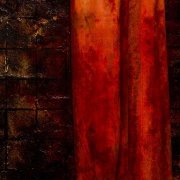
_SysTray UDF
Serg2000mr reacted to wraithdu for a topic
Here is my highly modified version of Tuape's UDF. The example shows how to get different info and how to remove dead icons (no mouse move required). I've included support for the Windows 7 NotifyIconOverflowWindow icons as well, however I recommend using my _OsVersionInfo UDF to determine the OS instead of @OSVersion. This should work on Win2000+, but some testers on XP and Vista would be appreciated. _SysTray #include-once ; ---------------------------------------------------------------------------- ; ; Author: Tuape ; Modified: Erik Pilsits ; ; Script Function: ; Systray UDF - Functions for reading icon info from system tray / removing ; any icon. ; ; Last Update: 5/13/2013 ; ; ---------------------------------------------------------------------------- ;=============================================================================== ; ; Function Name: _SysTrayIconCount($iWin = 1) ; Description: Returns number of icons on systray ; Note: Hidden icons are also reported ; Parameter(s): $iWin ; | 1 - ToolbarWindow32, Win2000+ ; | 2 - NotifyIconOverflowWindow, Win7+ ; ; Requirement(s): ; Return Value(s): On Success - Returns number of icons found ; On Failure - Returns -1 ; ; Author(s): Tuape, Erik Pilsits ; ;=============================================================================== Func _SysTrayIconCount($iWin = 1) Local Const $TB_BUTTONCOUNT = 1048 Local $hWnd = _FindTrayToolbarWindow($iWin) If $hWnd = -1 Then Return -1 Local $count = DllCall("user32.dll", "lresult", "SendMessageW", "hwnd", $hWnd, "uint", $TB_BUTTONCOUNT, "wparam", 0, "lparam", 0) If @error Then Return -1 Return $count[0] EndFunc ;==>_SysTrayIconCount ;=============================================================================== ; ; Function Name: _SysTrayIconTitles($iWin = 1) ; Description: Get list of all window titles that have systray icon ; Parameter(s): $iWin ; | 1 - ToolbarWindow32, Win2000+ ; | 2 - NotifyIconOverflowWindow, Win7+ ; Requirement(s): ; Return Value(s): On Success - Returns an array with all window titles ; On Failure - Returns -1 ; ; Author(s): Tuape, Erik Pilsits ; ;=============================================================================== Func _SysTrayIconTitles($iWin = 1) Local $count = _SysTrayIconCount($iWin) If $count <= 0 Then Return -1 Local $titles[$count] ; Get icon owner window"s title For $i = 0 To $count - 1 $titles[$i] = WinGetTitle(_SysTrayIconHandle($i, $iWin)) Next Return $titles EndFunc ;==>_SysTrayIconTitles ;=============================================================================== ; ; Function Name: _SysTrayIconPids($iWin = 1) ; Description: Get list of all processes id's that have systray icon ; Parameter(s): $iWin ; | 1 - ToolbarWindow32, Win2000+ ; | 2 - NotifyIconOverflowWindow, Win7+ ; Requirement(s): ; Return Value(s): On Success - Returns an array with all process id's ; On Failure - Returns -1 ; ; Author(s): Tuape, Erik Pilsits ; ;=============================================================================== Func _SysTrayIconPids($iWin = 1) Local $count = _SysTrayIconCount($iWin) If $count <= 0 Then Return -1 Local $processes[$count] For $i = 0 To $count - 1 $processes[$i] = WinGetProcess(_SysTrayIconHandle($i, $iWin)) Next Return $processes EndFunc ;==>_SysTrayIconPids ;=============================================================================== ; ; Function Name: _SysTrayIconProcesses($iWin = 1) ; Description: Get list of all processes that have systray icon ; Parameter(s): $iWin ; | 1 - ToolbarWindow32, Win2000+ ; | 2 - NotifyIconOverflowWindow, Win7+ ; Requirement(s): ; Return Value(s): On Success - Returns an array with all process names ; On Failure - Returns -1 ; ; Author(s): Tuape, Erik Pilsits ; ;=============================================================================== Func _SysTrayIconProcesses($iWin = 1) Local $pids = _SysTrayIconPids($iWin) If Not IsArray($pids) Then Return -1 Local $processes[UBound($pids)] ; List all processes Local $list = ProcessList() For $i = 0 To UBound($pids) - 1 For $j = 1 To $list[0][0] If $pids[$i] = $list[$j][1] Then $processes[$i] = $list[$j][0] ExitLoop EndIf Next Next Return $processes EndFunc ;==>_SysTrayIconProcesses ;=============================================================================== ; ; Function Name: _SysTrayIconIndex($test, $mode = 0, $iWin = 1) ; Description: Get list of all processes id"s that have systray icon ; Parameter(s): $test - process name / window title text / process PID ; $mode ; | 0 - get index by process name (default) ; | 1 - get index by window title ; | 2 - get index by process PID ; $iWin ; | 1 - ToolbarWindow32, Win2000+ ; | 2 - NotifyIconOverflowWindow, Win7+ ; Requirement(s): ; Return Value(s): On Success - Returns index of found icon ; On Failure - Returns -1 ; ; Author(s): Tuape, Erik Pilsits ; ;=============================================================================== Func _SysTrayIconIndex($test, $mode = 0, $iWin = 1) Local $ret = -1, $compare = -1 If $mode < 0 Or $mode > 2 Or Not IsInt($mode) Then Return -1 Switch $mode Case 0 $compare = _SysTrayIconProcesses($iWin) Case 1 $compare = _SysTrayIconTitles($iWin) Case 2 $compare = _SysTrayIconPids($iWin) EndSwitch If Not IsArray($compare) Then Return -1 For $i = 0 To UBound($compare) - 1 If $compare[$i] = $test Then $ret = $i ExitLoop EndIf Next Return $ret EndFunc ;==>_SysTrayIconIndex ; INTERNAL ===================================================================== ; ; Function Name: _SysTrayGetButtonInfo($iIndex, $iWin = 1, $iInfo = 0) ; Description: Gets Tray Button Info ; Parameter(s): $iIndex - icon index (Note: starting from 0) ; $iWin ; | 1 - ToolbarWindow32, Win2000+ ; | 2 - NotifyIconOverflowWindow, Win7+ ; $iInfo - Info to return ; | 1 - TBBUTTON structure ; | 2 - TRAYDATA structure ; | 3 - tooltip ; | 4 - icon position ; Requirement(s): ; Return Value(s): On Success - Returns requested info ; On Failure - Sets @error and returns -1 ; | 1 - Failed to find tray window ; | 2 - Failed to get tray window PID ; | 3 - Failed to open process ; | 4 - Failed to allocate memory ; | 5 - Failed to get TBBUTTON info ; ; Author(s): Erik Pilsits, Tuape ; ;=============================================================================== Func _SysTrayGetButtonInfo($iIndex, $iWin = 1, $iInfo = 1) Local Const $TB_GETBUTTON = 1047 ;~ Local Const $TB_GETBUTTONTEXT = 1099 ;~ Local Const $TB_GETBUTTONINFO = 1089 Local Const $TB_GETITEMRECT = 1053 Local Const $ACCESS = BitOR(0x0008, 0x0010, 0x0400) ; VM_OPERATION, VM_READ, QUERY_INFORMATION Local $TBBUTTON If @OSArch = "X86" Then $TBBUTTON = DllStructCreate("int iBitmap;int idCommand;byte fsState;byte fsStyle;byte bReserved[2];dword dwData;int iString") Else ; X64 $TBBUTTON = DllStructCreate("int iBitmap;int idCommand;byte fsState;byte fsStyle;byte bReserved[6];uint64 dwData;int64 iString") EndIf Local $TRAYDATA If @OSArch = "X86" Then $TRAYDATA = DllStructCreate("hwnd hwnd;uint uID;uint uCallbackMessage;dword Reserved[2];handle hIcon") Else $TRAYDATA = DllStructCreate("uint64 hwnd;uint uID;uint uCallbackMessage;dword Reserved[2];uint64 hIcon") EndIf Local $trayHwnd = _FindTrayToolbarWindow($iWin) If $trayHwnd = -1 Then Return SetError(1, 0, -1) Local $return, $err = 0 Local $ret = DllCall("user32.dll", "dword", "GetWindowThreadProcessId", "hwnd", $trayHwnd, "dword*", 0) If @error Or Not $ret[2] Then SetError(2, 0, -1) Local $pId = $ret[2] Local $procHandle = DllCall("kernel32.dll", "handle", "OpenProcess", "dword", $ACCESS, "bool", False, "dword", $pId) If @error Or Not $procHandle[0] Then Return SetError(3, 0, -1) Local $lpData = DllCall("kernel32.dll", "ptr", "VirtualAllocEx", "handle", $procHandle[0], "ptr", 0, "ulong", DllStructGetSize($TBBUTTON), "dword", 0x1000, "dword", 0x04) If Not @error And $lpData[0] Then $ret = DllCall("user32.dll", "lresult", "SendMessageW", "hwnd", $trayHwnd, "uint", $TB_GETBUTTON, "wparam", $iIndex, "lparam", $lpData[0]) If Not @error And $ret[0] Then DllCall("kernel32.dll", "bool", "ReadProcessMemory", "handle", $procHandle[0], "ptr", $lpData[0], "struct*", $TBBUTTON, "ulong", DllStructGetSize($TBBUTTON), "ulong*", 0) Switch $iInfo Case 2 ; TRAYDATA structure DllCall("kernel32.dll", "bool", "ReadProcessMemory", "handle", $procHandle[0], "ptr", DllStructGetData($TBBUTTON, 6), "struct*", $TRAYDATA, "ulong", DllStructGetSize($TRAYDATA), "ulong*", 0) $return = $TRAYDATA Case 3 ; tooltip $return = "" If BitShift(DllStructGetData($TBBUTTON, 7), 16) <> 0 Then Local $intTip = DllStructCreate("wchar[1024]") ; we have a pointer to a string, otherwise it is an internal resource identifier DllCall("kernel32.dll", "bool", "ReadProcessMemory", "handle", $procHandle[0], "ptr", DllStructGetData($TBBUTTON, 7), "struct*", $intTip, "ulong", DllStructGetSize($intTip), "ulong*", 0) $return = DllStructGetData($intTip, 1) ;else internal resource EndIf Case 4 ; icon position If Not BitAND(DllStructGetData($TBBUTTON, 3), 8) Then ; 8 = TBSTATE_HIDDEN Local $pos[2], $RECT = DllStructCreate("int;int;int;int") DllCall("user32.dll", "lresult", "SendMessageW", "hwnd", $trayHwnd, "uint", $TB_GETITEMRECT, "wparam", $iIndex, "lparam", $lpData[0]) DllCall("kernel32.dll", "bool", "ReadProcessMemory", "handle", $procHandle[0], "ptr", $lpData[0], "struct*", $RECT, "ulong", DllStructGetSize($RECT), "ulong*", 0) $ret = DllCall("user32.dll", "int", "MapWindowPoints", "hwnd", $trayHwnd, "ptr", 0, "struct*", $RECT, "uint", 2) $pos[0] = DllStructGetData($RECT, 1) $pos[1] = DllStructGetData($RECT, 2) $return = $pos Else $return = -1 EndIf Case Else ; TBBUTTON $return = $TBBUTTON EndSwitch Else $err = 5 EndIf DllCall("kernel32.dll", "bool", "VirtualFreeEx", "handle", $procHandle[0], "ptr", $lpData[0], "ulong", 0, "dword", 0x8000) Else $err = 4 EndIf DllCall("kernel32.dll", "bool", "CloseHandle", "handle", $procHandle[0]) If $err Then Return SetError($err, 0, -1) Else Return $return EndIf EndFunc ;==>_SysTrayGetButtonInfo ;=============================================================================== ; ; Function Name: _SysTrayIconHandle($iIndex, $iWin = 1) ; Description: Gets hwnd of window associated with systray icon of given index ; Parameter(s): $iIndex - icon index (Note: starting from 0) ; $iWin ; | 1 - ToolbarWindow32, Win2000+ ; | 2 - NotifyIconOverflowWindow, Win7+ ; ; Requirement(s): ; Return Value(s): On Success - Returns hwnd of found icon ; On Failure - Sets @error and returns -1 ; | See _SysTrayGetButtonInfo for @error returns ; ; Author(s): Tuape, Erik Pilsits ; ;=============================================================================== Func _SysTrayIconHandle($iIndex, $iWin = 1) Local $TRAYDATA = _SysTrayGetButtonInfo($iIndex, $iWin, 2) If @error Then Return SetError(@error, 0, -1) Else Return Ptr(DllStructGetData($TRAYDATA, 1)) EndIf EndFunc ;==>_SysTrayIconHandle ;=============================================================================== ; ; Function Name: _SysTrayIconTooltip($iIndex, $iWin = 1) ; Description: Gets the tooltip text of systray icon of given index ; Parameter(s): $iIndex - icon index (Note: starting from 0) ; $iWin ; | 1 - ToolbarWindow32, Win2000+ ; | 2 - NotifyIconOverflowWindow, Win7+ ; ; Requirement(s): ; Return Value(s): On Success - Returns tooltip text of icon ; On Failure - Sets @error and returns -1 ; | See _SysTrayGetButtonInfo for @error returns ; ; Author(s): Tuape, Erik Pilsits ; ;=============================================================================== Func _SysTrayIconTooltip($iIndex, $iWin = 1) Local $ret = _SysTrayGetButtonInfo($iIndex, $iWin, 3) If @error Then Return SetError(@error, 0, -1) Else Return $ret EndIf EndFunc ;==>_SysTrayIconTooltip ;=============================================================================== ; ; Function Name: _SysTrayIconPos($iIndex, $iWin = 1) ; Description: Gets x & y position of systray icon ; Parameter(s): $iIndex - icon index (Note: starting from 0) ; $iWin ; | 1 - ToolbarWindow32, Win2000+ ; | 2 - NotifyIconOverflowWindow, Win7+ ; ; Requirement(s): ; Return Value(s): On Success - Returns array, x [0] and y [1] position of icon ; On Failure - Sets @error and returns -1 ; | -1 - Icon is hidden (Autohide on XP, etc) ; | See _SysTrayGetButtonInfo for additional @error returns ; ; Author(s): Tuape, Erik Pilsits ; ;=============================================================================== Func _SysTrayIconPos($iIndex, $iWin = 1) Local $ret = _SysTrayGetButtonInfo($iIndex, $iWin, 4) If @error Then Return SetError(@error, 0, -1) Else If $ret = -1 Then Return SetError(-1, 0, -1) Else Return $ret EndIf EndIf EndFunc ;==>_SysTrayIconPos ;=============================================================================== ; ; Function Name: _SysTrayIconVisible($iIndex, $iWin = 1) ; Description: Gets the visibility of a systray icon ; Parameter(s): $iIndex - icon index (Note: starting from 0) ; $iWin ; | 1 - ToolbarWindow32, Win2000+ ; | 2 - NotifyIconOverflowWindow, Win7+ ; ; Requirement(s): ; Return Value(s): On Success - Returns True (visible) or False (hidden) ; On Failure - Sets @error and returns -1 ; | See _SysTrayGetButtonInfo for @error returns ; ; Author(s): Tuape, Erik Pilsits ; ;=============================================================================== Func _SysTrayIconVisible($iIndex, $iWin = 1) Local $TBBUTTON = _SysTrayGetButtonInfo($iIndex, $iWin, 1) If @error Then Return SetError(@error, 0, -1) Else Return Not BitAND(DllStructGetData($TBBUTTON, 3), 8) ;TBSTATE_HIDDEN EndIf EndFunc ;==>_SysTrayIconVisible ;=============================================================================== ; ; Function Name: _SysTrayIconHide($index, $iFlag, $iWin = 1) ; Description: Hides / unhides any icon on systray ; ; Parameter(s): $index - icon index. Can be queried with _SysTrayIconIndex() ; $iFlag - hide (1) or show (0) icon ; $iWin ; | 1 - ToolbarWindow32, Win2000+ ; | 2 - NotifyIconOverflowWindow, Win7+ ; ; Requirement(s): ; Return Value(s): On Success - Returns 1 if operation was successfull or 0 if ; icon was already hidden/unhidden ; On Failure - Sets @error and returns -1 ; | See _SysTrayGetButtonInfo for @error returns ; ; Author(s): Tuape, Erik Pilsits ; ;=============================================================================== Func _SysTrayIconHide($index, $iFlag, $iWin = 1) ;~ Local Const $TB_HIDEBUTTON = 0x0404 ; WM_USER + 4 Local $TBBUTTON = _SysTrayGetButtonInfo($index, $iWin, 1) If @error Then Return SetError(@error, 0, -1) Local $visible = Not BitAND(DllStructGetData($TBBUTTON, 3), 8) ;TBSTATE_HIDDEN If ($iFlag And Not $visible) Or (Not $iFlag And $visible) Then Return 0 Else Local $TRAYDATA = _SysTrayGetButtonInfo($index, $iWin, 2) If @error Then Return SetError(@error, 0, -1) Local $NOTIFYICONDATA = DllStructCreate("dword cbSize;hwnd hWnd;uint uID;uint uFlags;uint uCallbackMessage;handle hIcon;wchar szTip[128];" _ & "dword dwState;dword dwStateMask;wchar szInfo[256];uint uVersion;wchar szInfoTitle[64];dword dwInfoFlags;" _ & "STRUCT;ulong;ushort;ushort;byte[8];ENDSTRUCT;handle hBalloonIcon") DllStructSetData($NOTIFYICONDATA, 1, DllStructGetSize($NOTIFYICONDATA)) DllStructSetData($NOTIFYICONDATA, 2, Ptr(DllStructGetData($TRAYDATA, 1))) DllStructSetData($NOTIFYICONDATA, 3, DllStructGetData($TRAYDATA, 2)) DllStructSetData($NOTIFYICONDATA, 4, 8) ; NIF_STATE DllStructSetData($NOTIFYICONDATA, 8, $iFlag) ; dw_State, 0 or 1 = NIS_HIDDEN DllStructSetData($NOTIFYICONDATA, 9, 1) ; dwStateMask Local $ret = DllCall("shell32.dll", "bool", "Shell_NotifyIconW", "dword", 0x1, "struct*", $NOTIFYICONDATA) ; NIM_MODIFY DllCall("user32.dll", "lresult", "SendMessageW", "hwnd", WinGetHandle("[CLASS:Shell_TrayWnd]"), "uint", 0x001A, "wparam", 0, "lparam", 0) ; WM_SETTINGCHANGE If IsArray($ret) And $ret[0] Then Return 1 Else Return 0 EndIf ;~ $ret = DllCall("user32.dll", "lresult", "SendMessageW", "hwnd", $trayHwnd, "uint", $TB_HIDEBUTTON, "wparam", DllStructGetData($TBBUTTON, 2), "lparam", $iHide) ;~ If @error Or Not $ret[0] Then ;~ $return = -1 ;~ Else ;~ $return = $ret[0] ;~ EndIf EndIf EndFunc ;==>_SysTrayIconHide ;=============================================================================== ; ; Function Name: _SysTrayIconMove($curPos, $newPos, $iWin = 1) ; Description: Moves systray icon ; ; Parameter(s): $curPos - icon's current index (0 based) ; $newPos - icon's new position ; ($curPos+1 = one step to right, $curPos-1 = one step to left) ; $iWin ; | 1 - ToolbarWindow32, Win2000+ ; | 2 - NotifyIconOverflowWindow, Win7+ ; ; Requirement(s): AutoIt3 Beta ; Return Value(s): On Success - Returns 1 if operation was successfull, 0 if not ; On Failure - Sets @error and returns -1 ; | 1 - Bad parameters ; | 2 - Failed to find tray window ; ; Author(s): Tuape, Erik Pilsits ; ;=============================================================================== Func _SysTrayIconMove($curPos, $newPos, $iWin = 1) Local Const $TB_MOVEBUTTON = 0x0452 ; WM_USER + 82 Local $iconCount = _SysTrayIconCount($iWin) If $curPos < 0 Or $newPos < 0 Or $curPos > $iconCount - 1 Or $newPos > $iconCount - 1 Or Not IsInt($curPos) Or Not IsInt($newPos) Then Return SetError(1, 0, -1) Local $hWnd = _FindTrayToolbarWindow($iWin) If $hWnd = -1 Then Return SetError(2, 0, -1) Local $ret = DllCall("user32.dll", "lresult", "SendMessageW", "hwnd", $hWnd, "uint", $TB_MOVEBUTTON, "wparam", $curPos, "lparam", $newPos) If @error Or Not $ret[0] Then Return 0 Else Return 1 EndIf EndFunc ;==>_SysTrayIconMove ;=============================================================================== ; ; Function Name: _SysTrayIconRemove($index, $iWin = 1) ; Description: Removes systray icon completely. ; ; Parameter(s): $index - Icon index (first icon is 0) ; $iWin ; | 1 - ToolbarWindow32, Win2000+ ; | 2 - NotifyIconOverflowWindow, Win7+ ; ; Return Value(s): On Success - Returns 1 if icon successfully removed, 0 if not ; On Failure - Sets @error and returns -1 ; | See _SysTrayGetButtonInfo for @error returns ; ; Author(s): Tuape, Erik Pilsits ; ;=============================================================================== Func _SysTrayIconRemove($index, $iWin = 1) Local Const $TB_DELETEBUTTON = 1046 Local $TRAYDATA = _SysTrayGetButtonInfo($index, $iWin, 2) If @error Then Return SetError(@error, 0, -1) Local $NOTIFYICONDATA = DllStructCreate("dword cbSize;hwnd hWnd;uint uID;uint uFlags;uint uCallbackMessage;handle hIcon;wchar szTip[128];" _ & "dword dwState;dword dwStateMask;wchar szInfo[256];uint uVersion;wchar szInfoTitle[64];dword dwInfoFlags;" _ & "STRUCT;ulong;ushort;ushort;byte[8];ENDSTRUCT;handle hBalloonIcon") DllStructSetData($NOTIFYICONDATA, 1, DllStructGetSize($NOTIFYICONDATA)) DllStructSetData($NOTIFYICONDATA, 2, Ptr(DllStructGetData($TRAYDATA, 1))) DllStructSetData($NOTIFYICONDATA, 3, DllStructGetData($TRAYDATA, 2)) Local $ret = DllCall("shell32.dll", "bool", "Shell_NotifyIconW", "dword", 0x2, "struct*", $NOTIFYICONDATA) ; NIM_DELETE DllCall("user32.dll", "lresult", "SendMessageW", "hwnd", WinGetHandle("[CLASS:Shell_TrayWnd]"), "uint", 0x001A, "wparam", 0, "lparam", 0) ; WM_SETTINGCHANGE If IsArray($ret) And $ret[0] Then Return 1 Else Return 0 EndIf ;~ Local $hWnd = _FindTrayToolbarWindow($iWin) ;~ If $hwnd = -1 Then Return -1 ;~ Local $ret = DllCall("user32.dll", "lresult", "SendMessageW", "hwnd", $hWnd, "uint", $TB_DELETEBUTTON, "wparam", $index, "lparam", 0) ;~ If @error Or Not $ret[0] Then Return -1 ;~ Return $ret[0] EndFunc ;==>_SysTrayIconRemove ;=============================================================================== ; ; Function Name: _FindTrayToolbarWindow($iWin = 1) ; Description: Utility function for finding Toolbar window hwnd ; Parameter(s): $iWin ; | 1 - ToolbarWindow32, Win2000+ ; | 2 - NotifyIconOverflowWindow, Win7+ ; ; Requirement(s): ; Return Value(s): On Success - Returns Toolbar window hwnd ; On Failure - returns -1 ; ; Author(s): Tuape, Erik Pilsits ; ;=============================================================================== Func _FindTrayToolbarWindow($iWin = 1) Local $hwnd, $ret = -1 If $iWin = 1 Then $hWnd = DllCall("user32.dll", "hwnd", "FindWindow", "str", "Shell_TrayWnd", "ptr", 0) If @error Then Return -1 $hWnd = DllCall("user32.dll", "hwnd", "FindWindowEx", "hwnd", $hWnd[0], "hwnd", 0, "str", "TrayNotifyWnd", "ptr", 0) If @error Then Return -1 If @OSVersion <> "WIN_2000" Then $hWnd = DllCall("user32.dll", "hwnd", "FindWindowEx", "hwnd", $hWnd[0], "hwnd", 0, "str", "SysPager", "ptr", 0) If @error Then Return -1 EndIf $hWnd = DllCall("user32.dll", "hwnd", "FindWindowEx", "hwnd", $hWnd[0], "hwnd", 0, "str", "ToolbarWindow32", "ptr", 0) If @error Then Return -1 $ret = $hwnd[0] ElseIf $iWin = 2 Then ; NotifyIconOverflowWindow for Windows 7 $hWnd = DllCall("user32.dll", "hwnd", "FindWindow", "str", "NotifyIconOverflowWindow", "ptr", 0) If @error Then Return -1 $hWnd = DllCall("user32.dll", "hwnd", "FindWindowEx", "hwnd", $hWnd[0], "hwnd", 0, "str", "ToolbarWindow32", "ptr", 0) If @error Then Return -1 $ret = $hwnd[0] EndIf Return $ret EndFunc ;==>_FindTrayToolbarWindow Example #NoTrayIcon #include <_SysTray.au3> #include <Process.au3> $count = _SysTrayIconCount() ConsoleWrite("Count visible tray: " & $count & @CRLF) For $i = $count - 1 To 0 Step -1 $handle = _SysTrayIconHandle($i) $visible = _SysTrayIconVisible($i) $pid = WinGetProcess($handle) $name = _ProcessGetName($pid) $title = WinGetTitle($handle) $tooltip = _SysTrayIconTooltip($i) ConsoleWrite("index: " & $i & @TAB & "visible: " & $visible & @TAB & "handle: " & $handle & @TAB & "pid: " & _ $pid & @TAB & "proc: " & $name & @TAB & @TAB & "title: " & $title & @TAB & @TAB & "tooltip: " & $tooltip & @CRLF) If $pid = -1 Then _SysTrayIconRemove($i) Next If _FindTrayToolbarWindow(2) <> -1 Then ConsoleWrite("-====================-" & @CRLF) $countwin7 = _SysTrayIconCount(2) ConsoleWrite("Count overflow area: " & $countwin7 & @CRLF) For $i = $countwin7 - 1 To 0 Step -1 $handle = _SysTrayIconHandle($i, 2) $visible = _SysTrayIconVisible($i, 2) $pid = WinGetProcess($handle) $name = _ProcessGetName($pid) $title = WinGetTitle($handle) $tooltip = _SysTrayIconTooltip($i, 2) ConsoleWrite("index: " & $i & @TAB & "visible: " & $visible & @TAB & "handle: " & $handle & @TAB & "pid: " & _ $pid & @TAB & "proc: " & $name & @TAB & @TAB & "title: " & $title & @TAB & @TAB & "tooltip: " & $tooltip & @CRLF) If $pid = -1 Then _SysTrayIconRemove($i, 2) Next EndIf1 point -
@koolzerro This should give you an idea of how to do it passing a message The other ways would use a similar logic #include <WinAPI.au3> Global $gsErr Global $sBlank = " ";Just to make messagebox wider HotKeySet("{ESC}", _Exit_Now) _Main() ;-------------------------------------------------------------------------------------- Func _Create_Message($sMessage) Local $iMsg = _WinAPI_RegisterWindowMessage($sMessage) If $iMsg = 0 Then $gsErr &= "IPC Message Creation Failure " & $sMessage & @CRLF Return $iMsg EndFunc ;==>_Create_Message Func _Create_MessageHandler($iMsg, $sFunction) If $iMsg <> 0 Then Opt("GUIOnEventMode", 1) GUICreate(@ScriptName & "_IPC", 0, 0, 0, 0, 0, 0) ; create a top level window GUIRegisterMsg($iMsg, $sFunction) EndIf EndFunc ;==>_Create_MessageHandler Func _Exit_Now() OnAutoItExitUnRegister("_Exit_Now") Exit EndFunc ;==>_Exit_Now Func _IsCompiled() ;wakillon Return @Compiled EndFunc ;==>_IsCompiled Func _Main() If _IsCompiled() Then ;We handle our Single instance here Local $iActMsg = _Create_Message("@ScriptFullPath" & "_msg") RunPassThrough($iActMsg) _Create_MessageHandler($iActMsg, Activated_Ext) EndIf OnAutoItExitRegister("_Exit_Now") While True Sleep(1000) WEnd Exit EndFunc ;==>_Main Func Activated_Ext($hWnd, $iMsg, $wParam, $lParam) ;Message Posted from other instances MsgBox(0, "My Pid = " & @AutoItPID, $sBlank & @CRLF & " Passed From Pid: " & int($lParam) & @CRLF & BinaryToString($wParam)) EndFunc ;==>Activated_Ext Func RunPassThrough($iActMsg = 0) Local $sSwitches = $CmdLineRaw MsgBox(0, "Pass Through " & @AutoItPID, $sBlank & @CRLF & $sSwitches) RunSingleInstance($iActMsg) EndFunc ;==>RunPassThrough Func RunSingleInstance($iActMsg) Local Const $HWND_BROADCAST = 0xFFFF If _Singleton_NOCHILD(@ScriptName, 1) = 0 Then ;If $CmdLine[0] > 1 And $CmdLine[1] <> "" Then ;Check Parameters here _WinAPI_PostMessage($HWND_BROADCAST, $iActMsg, StringToBinary("ASDF"), @AutoItPID) ;passes info back to original instance ;Take Note Of limit of 32 bits for wParam and lParam so 4 8-bit characters if you use text.... ;;EndIf MsgBox(0, @AutoItPID, "Already running : Exiting") _Exit_Now() ;single instance of script ONLY EndIf EndFunc ;==>RunSingleInstance ;;You could just use the singleton function, I removed unneeded functionality from this version Func _Singleton_NOCHILD($sOccurrenceName, $iFlag = 0) ;Valik ;Without SECURITY_ATTRIBUTES;;; Local Const $ERROR_ALREADY_EXISTS = 183 Local $aHandle = DllCall("kernel32.dll", "handle", "CreateMutexW", "struct*", 0, "bool", 1, "wstr", $sOccurrenceName) If @error Then Return SetError(@error, @extended, 0) Local $aLastError = DllCall("kernel32.dll", "dword", "GetLastError") If @error Then Return SetError(@error, @extended, 0) If $aLastError[0] = $ERROR_ALREADY_EXISTS Then If BitAND($iFlag, 1) Then DllCall("kernel32.dll", "bool", "CloseHandle", "handle", $aHandle[0]) If @error Then Return SetError(@error, @extended, 0) Return SetError($aLastError[0], $aLastError[0], 0) Else Exit -1 EndIf EndIf Return $aHandle[0] EndFunc ;==>_Singleton_NOCHILD1 point
-
In that case, be aware of firewall/AV restrictions on UDP port usage that may affect user environments. You may have to actively enable access first; but since your processes run at admin/system level anyhow, they have the required permissions to do so. Apologies for being obscure. I hope you're not abandoning the HighMem option because of unfamiliarity with structs. Structs are easy. You can think of them as a database record containing one or more fields, with each field defined (e.g., by you) to hold a specific type of data (integer, string, double precision value, and so forth). Or easier still, a struct is like a big IKEA wardrobe you design yourself, with drawers of different sizes (different variable types) and each as deep as you want it to be: one may hold a single coin (integer), another a big pile of books (strings). They can be tiny (a few bytes) to humongous in size (GBs). Best of all, you have the option of deciding exactly where you want that wardrobe to be placed in the room (memory), for example in the SW corner, 5 cm from the west wall and 10 cm from the southern one (using the optional second parameter in DllStructCreate, a 32/64 bit memory pointer). You can even define multiple wardrobes to physically overlap, mapping to the same space, but each with a different internal structure, so the same content (data) can be interpreted differently depending on whether you open a book drawer (string) in wardrobe 1, or a numeric one (e.g., integers) in wardrobe 2. So despite being fixed (structures), they're actually very flexible (to work with). In the IPC example, several processes are mapping the same-shaped wardrobe(s) as defined in the Test3 .ini file, and then each one in turn opens a drawer, takes something out (DllStructGetData), and sticks something else back in (DllStructSetData). It's no different than accessing an internal $variable, other than interacting with a memory address (DllStructGetPtr) directly rather than indirectly. As long as you know where the wardrobe sits and what (type and size of) drawers it contains (and in what order), you can manipulate their content to your heart's content. The only issue in IPC is that virtual memory is remapped to a different base address by each process, so the room is (nominally) different, but the wardrobe's position relative to its SW corner is the same. That's why those relative offsets were parsed in the example scripts (clumsily through an .ini, because it was just for illustration). DllCalls also rely heavily on them, whenever more than a single piece of data needs to be parsed or returned. Much of AutoIt's functionality, and indeed Windows OS itself, relies on dll calls (to various Windows kernel dlls), and many of those in turn rely on structs to get the job done. Therefore it might be worth your time to get to know them, especially since many programming languages provide access to them (my E4A matrices are structs, and I manipulate them from three very different programming environments). Of course, it's up to you...1 point
-
Try this: #Include <Array.au3> Local $s = "Hello, " & Chr(27) & "[ 40;31mThis is red on black " & chr(13) & _ Chr(27) & "[ 47;32m And this is green on white" & chr(10) & _ Chr(27) & "[ 47 ; 32 m And this is also green on white (more spaces)" & _ Chr(27) & "[1234567890123456798Kvftio this matches the definition," & @TAB & "albeit probably invalid ANSI escape" & _ Chr(27) & "[ 47;32 !!!! this is not an ANSI " & Chr(27) & "sequence" & _ Chr(27) & "[ z but this one is OK and final bell!" & Chr(7) Local Const $_Not_A_Char = '*' Local $s2 = Execute("'" & StringRegExpReplace($s, "(?x)" & _ "(?(DEFINE) (?<ANSI_Escape> \[ (?:\s*\d*\s*;?)* [[:alpha:]]) )" & _ "( \x1B (?&ANSI_Escape) | [\x00-\x1F] )", _ "' & $_Not_A_Char & _Constify('$2') & $_Not_A_Char & '") & "'") Local $aRes = StringRegExp($s2, "(?x) (\" & $_Not_A_Char & ".+? \" & $_Not_A_Char & " | [^\" & $_Not_A_Char & "]+ )", 3) _ArrayDisplay($aRes, "Mixed results") ; example of "dressing" control characters and ANSI sequences Func _ConstiFy($c) Local Static $aK = [ _ 'NUL', 'SOH', 'STX', 'ETX', 'EOT', 'ENQ', 'ACK', 'BEL', _ 'BS', 'TAB', 'LF', 'VT', 'FF', 'CR', 'SO', 'SI', _ 'DLE', 'DC1', 'DC2', 'DC3', 'DC4', 'NAK', 'SYN', 'ETB', _ 'CAN', 'EM', 'SUB', 'ESC', 'FS', 'GS', 'RS', 'US' _ ] Return('@' & $aK[AscW(StringLeft($c, 1))] & StringMid($c, 2)) EndFunc1 point
-

How to set active child GUI
123disconnect reacted to KickStarter15 for a topic
@123disconnect Yeah right, but you can form an array on that to make it short and some conditions to make it hidden and shown. For now, I'm on leave for Holidays so maybe when I came back I'll check on this later next week.1 point -
Here, let me then: #include <WinApi.au3> ;;;;;;;;;;;;;;;;;;;;;;;;;;;;;;;;;;;;;; AddHookApi("user32.dll", "MessageBoxW", "Intercept_MessageBoxW", "int", "hwnd;wstr;wstr;uint") Func Intercept_MessageBoxW($hWnd, $sText, $sTitle, $iType) Local $aCall = DllCall("user32.dll", "int", "MessageBoxW", _ "hwnd", $hWnd, _ "wstr", $sText, _ "wstr", StringReplace($sTitle, "AutoIt", @ScriptName), _ "uint", $iType) If @error Or Not $aCall[0] Then Return 0 Return $aCall[0] EndFunc ;;;;;;;;;;;;;;;;;;;;;;;;;;;;;;;;;;;;;; ; Let's try it ; Usual message box MsgBox(0, 'Test', 'Some text') ; Cause error that would say some AutoIt shit happened, but now it wouldn't say "AutoIt" DllStructCreate("byte[123456789097]") ; The End ; The magic is down below Func AddHookApi($sModuleName, $vFunctionName, $vNewFunction, $sRet = "", $sParams = "") Local Static $pImportDirectory, $hInstance Local Const $IMAGE_DIRECTORY_ENTRY_IMPORT = 1 If Not $pImportDirectory Then $hInstance = _WinAPI_GetModuleHandle(0) $pImportDirectory = ImageDirectoryEntryToData($hInstance, $IMAGE_DIRECTORY_ENTRY_IMPORT) If @error Then Return SetError(1, 0, 0) EndIf Local $iIsInt = IsInt($vFunctionName) Local $iRestore = Not IsString($vNewFunction) Local $tIMAGE_IMPORT_MODULE_DIRECTORY Local $pDirectoryOffset = $pImportDirectory Local $tModuleName Local $iInitialOffset, $iInitialOffset2 Local $iOffset2 Local $tBufferOffset2, $iBufferOffset2 Local $tBuffer, $tFunctionOffset, $pOld, $fMatch, $pModuleName, $pFuncName Local Const $PAGE_READWRITE = 0x04 While 1 $tIMAGE_IMPORT_MODULE_DIRECTORY = DllStructCreate("dword RVAOriginalFirstThunk;" & _ "dword TimeDateStamp;" & _ "dword ForwarderChain;" & _ "dword RVAModuleName;" & _ "dword RVAFirstThunk", _ $pDirectoryOffset) If Not DllStructGetData($tIMAGE_IMPORT_MODULE_DIRECTORY, "RVAFirstThunk") Then ExitLoop $pModuleName = $hInstance + DllStructGetData($tIMAGE_IMPORT_MODULE_DIRECTORY, "RVAModuleName") $tModuleName = DllStructCreate("char Name[" & _WinAPI_StringLenA($pModuleName) & "]", $pModuleName) If DllStructGetData($tModuleName, "Name") = $sModuleName Then ; function from this module $iInitialOffset = $hInstance + DllStructGetData($tIMAGE_IMPORT_MODULE_DIRECTORY, "RVAFirstThunk") $iInitialOffset2 = $hInstance + DllStructGetData($tIMAGE_IMPORT_MODULE_DIRECTORY, "RVAOriginalFirstThunk") If $iInitialOffset2 = $hInstance Then $iInitialOffset2 = $iInitialOffset $iOffset2 = 0 While 1 $tBufferOffset2 = DllStructCreate("dword_ptr", $iInitialOffset2 + $iOffset2) $iBufferOffset2 = DllStructGetData($tBufferOffset2, 1) If Not $iBufferOffset2 Then ExitLoop If $iIsInt Then If BitAND($iBufferOffset2, 0xFFFFFF) = $vFunctionName Then $fMatch = True; wanted function Else $pFuncName = $hInstance + $iBufferOffset2 + 2 ; 2 is size od "word", see line below... $tBuffer = DllStructCreate("word Ordinal; char Name[" & _WinAPI_StringLenA($pFuncName) & "]", $hInstance + $iBufferOffset2) If DllStructGetData($tBuffer, "Name") == $vFunctionName Then $fMatch = True; wanted function EndIf If $fMatch Then $tFunctionOffset = DllStructCreate("ptr", $iInitialOffset + $iOffset2) VirtualProtect(DllStructGetPtr($tFunctionOffset), DllStructGetSize($tFunctionOffset), $PAGE_READWRITE) If @error Then Return SetError(3, 0, 0) $pOld = DllStructGetData($tFunctionOffset, 1) If $iRestore Then DllStructSetData($tFunctionOffset, 1, $vNewFunction) Else DllStructSetData($tFunctionOffset, 1, DllCallbackGetPtr(DllCallbackRegister($vNewFunction, $sRet, $sParams))) EndIf Return $pOld EndIf $iOffset2 += DllStructGetSize($tBufferOffset2) WEnd ExitLoop EndIf $pDirectoryOffset += 20 ; size of $tIMAGE_IMPORT_MODULE_DIRECTORY WEnd Return SetError(4, 0, 0) EndFunc Func VirtualProtect($pAddress, $iSize, $iProtection) Local $aCall = DllCall("kernel32.dll", "bool", "VirtualProtect", "ptr", $pAddress, "dword_ptr", $iSize, "dword", $iProtection, "dword*", 0) If @error Or Not $aCall[0] Then Return SetError(1, 0, 0) Return 1 EndFunc Func ImageDirectoryEntryToData($hInstance, $iDirectoryEntry) ; Get pointer to data Local $pPointer = $hInstance ; Start processing passed binary data. 'Reading' PE format follows. Local $tIMAGE_DOS_HEADER = DllStructCreate("char Magic[2];" & _ "word BytesOnLastPage;" & _ "word Pages;" & _ "word Relocations;" & _ "word SizeofHeader;" & _ "word MinimumExtra;" & _ "word MaximumExtra;" & _ "word SS;" & _ "word SP;" & _ "word Checksum;" & _ "word IP;" & _ "word CS;" & _ "word Relocation;" & _ "word Overlay;" & _ "char Reserved[8];" & _ "word OEMIdentifier;" & _ "word OEMInformation;" & _ "char Reserved2[20];" & _ "dword AddressOfNewExeHeader", _ $pPointer) Local $sMagic = DllStructGetData($tIMAGE_DOS_HEADER, "Magic") ; Check if it's valid format If Not ($sMagic == "MZ") Then Return SetError(1, 0, 0) ; MS-DOS header missing. Btw 'MZ' are the initials of Mark Zbikowski in case you didn't know. ; Move pointer $pPointer += DllStructGetData($tIMAGE_DOS_HEADER, "AddressOfNewExeHeader") ; move to PE file header ; In place of IMAGE_NT_SIGNATURE structure Local $tIMAGE_NT_SIGNATURE = DllStructCreate("dword Signature", $pPointer) ; Check signature If DllStructGetData($tIMAGE_NT_SIGNATURE, "Signature") <> 17744 Then ; IMAGE_NT_SIGNATURE Return SetError(2, 0, 0) ; wrong signature. For PE image should be "PE\0\0" or 17744 dword. EndIf ; Move pointer $pPointer += 4 ; size of $tIMAGE_NT_SIGNATURE structure ; In place of IMAGE_FILE_HEADER structure ; Move pointer $pPointer += 20 ; size of $tIMAGE_FILE_HEADER structure ; Determine the type Local $tMagic = DllStructCreate("word Magic;", $pPointer) Local $iMagic = DllStructGetData($tMagic, 1) Local $tIMAGE_OPTIONAL_HEADER If $iMagic = 267 Then ; x86 version ; Move pointer $pPointer += 96 ; size of $tIMAGE_OPTIONAL_HEADER ElseIf $iMagic = 523 Then ; x64 version ; Move pointer $pPointer += 112 ; size of $tIMAGE_OPTIONAL_HEADER Else Return SetError(3, 0, 0) ; unsupported module type EndIf ; Validate input by checking available number of structures that are in the module Local Const $IMAGE_NUMBEROF_DIRECTORY_ENTRIES = 16 ; predefined value that PE modules always use (AutoIt certainly) If $iDirectoryEntry > $IMAGE_NUMBEROF_DIRECTORY_ENTRIES - 1 Then Return SetError(4, 0, 0) ; invalid input ; Calculate the offset to wanted entry (every entry is 8 bytes) $pPointer += 8 * $iDirectoryEntry ; At place of correst directory entry Local $tIMAGE_DIRECTORY_ENTRY = DllStructCreate("dword VirtualAddress; dword Size", $pPointer) ; Collect data Local $pAddress = DllStructGetData($tIMAGE_DIRECTORY_ENTRY, "VirtualAddress") If $pAddress = 0 Then Return SetError(5, 0, 0) ; invalid input ; $pAddress is RVA, add it to base address Return $hInstance + $pAddress EndFuncedit: because this is better than before.1 point


